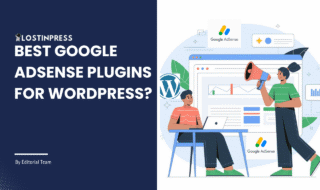Chatbots have changed the game for online platforms by automating specific tasks and enabling rapid and effective communication channels. Integration of a chatbot with your WordPress website can be simple and easy if you have the correct method. In this article, we’ll discover how to integrate chatbot in WordPress Using plugin (AI Engine Plugin).
Table of Contents
How to Integrate Chatbot in Wordpress Using Plugin (AI Engine Plugin)
Step 1: Instaling AI Engine plugin
Install and activate the AI Engine plugin on your WordPress dashboard.
How to? Go to Plugins > Add New, then search “AI Engine”

After installing and activating, you’ll see a new menu at the left sidebar of your Admin dashboard called “Meow Apps”.
Two sub-menus are available:
- Dashboard. General dashboard featuring all plugins created by Jordy Meow. ready for activation if required, while accessing general settings tabs for performance, or PHP errors.
- AI Engine. Here you can access all the tools (and their settings) offered by the AI Engine plugin. There’s access for creating a chatbot.

Step 2: Connecting plugin to OpenAI
The second step involves connect it to an artificial intelligence service. For this, the plugin’s author recommends OpenAI, the parent company of the famous ChatGPT.
Create an OpenAI account if you don’t have one. Start the process by clicking on the “Try ChatGPT” button in the top right-hand corner of the page:

If you already have an OpenAI account, Retrieve your API keys. For this Click on your profile, then on “View API Keys.”
click on “Create new secret key”:

Copy this API key. Go back to WordPress, then paste the key in the “Settings” tab, in the “API Key” field:

To create a chatbot make sure to check all of the features mentioned below in the Dashboard Tab

Step 3: Set up the chatbot’s general settings
Begin with setting up your chatbot by checking some general settings in the “Default” tab. Here are two important settings to look at.
Main Settings
In the “Main Settings” drop-down menu, you can choose following :
- A theme for your chatbot:
With a choice between ChatGPT, Messages (iOS), and none. If you choose ChatGPT (default selected), the chatbot’s appearance will match the one on ChatGPT. - The mode:
Chat or Images, if you want images to be generated for your users. - Context:
Important element that is described below

This is where you need to give as much information as possible to the artificial intelligence, making answers more precise for your visitors.
Be as exhaustive as possible. For example, if you have a WooCommerce store that sells Sports products, detail what your expertise is (e.g. “You’re an expert in sports products industry”).
Explain which product type you sell, your price range, your market and values, your history, your targets, etc.
You can set up Response tone like a (friendly tone, professional tone , controversial tone).
Visual Settings
This menu helps you set up your visuals modifications, you can set customize texts. you can set following.
- Your name (Used by the chatbot to interact with your visitors)
- welcome message
- Phrase to prompt your visitor to write a message
You can see preview of your chatbot on the right helps you understand your setting appearance simultaneously:

If you want something more discreet on your pages, click on the “Popup” box.
You can select the icon of your choice, and choose its location from the “Popup Settings ” drop-down menu (bottom right, bottom left, top right, or top left).
See Guide to set Pop up in WordPress without plugin

You can also add other chatbots, for example to create one specific to a particular page, by clicking on the little “+” icon.
Each chatbot created could be duplicated or deleted in the “Actions” submenu:

Step 4: Customize the style of your WordPress chatbot
Let’s move on to customizing the visual appearance of your chatbot. To do so, toggle the “Theme Editor” button:

Two new tabs appear, corresponding to the two available modes (ChatGPT and Messages). You can customize both the chatbot itself, and the popup window associated with it.
You can set modifications for the following elements:
- Font size
- Color of the text, background, and “Send” button
- Margins
- Spacing

Step 5: Integrate the chatbot into your site
After customizing the settings. The plugin automatically save changes for you.
The only thing to consider is where you want to integrate your chatbot. By default, you have two options:
- Display on all pages.
- Display on page of your choice.
To integrate the chatbot on your entire site, select “Default” in the “Site-Wide Chat” option:

Looking to integrate chatbot on a specific page? Simply copy the generated shortcode, something like: [mwai_chatbot id="default"].
Go to the desired page to set chatbot, then paste your shortcode into a “shortcode” block in the WordPress content editor.
That’s all for integrating chatbot on your website
Conclusion
Chatbots have transformed the way we interact with online platforms, and integrating them with WordPress websites can provide numerous benefits. From cost savings to increased engagement and multilingual support, chatbots can enhance the user experience and streamline processes. Whether you choose to integrate chatbots using plugins or custom coding, it’s essential to test them thoroughly to ensure they perform as intended. With the correct tools and knowledge, integrating chatbots with WordPress can be simple and easy.
FAQs
Where are chatbots used?
Many companies, including customer service, healthcare, banking, e-commerce, and others, use chatbots. They can offer support, data, help with transactions, and answers to questions from users.
Do chatbots replace human interaction?
Although chatbots are capable of handling repetitive and routine jobs, they are not meant to completely replace human connections. Their purpose is to assist human labor while saving up time for more complex and customized exchanges.
What are the challenges in chatbot development?
Handling confusing user inquiries, maintaining context in discussions, protecting data privacy, and finding the ideal ratio between automation and human interaction are among the difficulties.
Are chatbots secure?
The way chatbots are implemented determines how secure they are. To guarantee that sensitive data stays safe, it is essential to adhere to best practices for data encryption, access limits, and frequent security audits.



